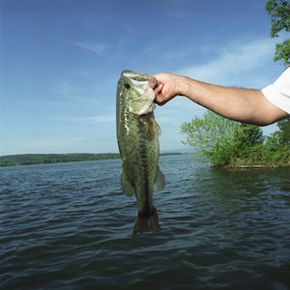It's called a sport, but some enthusiasts might dub it meditative. Silence is golden. At the crack of dawn in quiet solitude they sit in boats, stroll lakeshores and riverbanks or wade waist-deep into rushing streams. Then the waiting begins. Despite what you see on fishing shows, it can take hours to get a bite. If your luck is down, you may spend an entire day without as much as a single tug. Fishermen are lulled into an almost Zen-like state, listening to the click of the reel and the plop of the lure hitting the water, birds singing and breeze blowing. Then, out of nowhere, the fish hits the line, sending the angler's adrenaline level through the roof. The once-lazy, loose fishing line is now alive, taught and jerking back and forth. The rod that was stick-straight and pointing skyward moments ago is bent at an improbable angle toward the water.
From this point, many fishermen practice something called catch and release. Instead of hanging the fish on a chain stringer or tossing it in a cooler of water, the catch-and-release fisherman removes the hook from the fish and places it back into the water with great care as quickly as possible.
Advertisement
Forty-four million Americans hit lakes, rivers and oceans each year to fish recreationally, ringing up a tab of $41 billion along the way [source: Reiss, et al.]. It's a booming industry. To help conserve the fish population, regulations are put in place that only allow fishing during certain times of the year. The same goes for how many and what size fish you can keep. The National Park Service encourages catch and release of all native species. It also recommends keeping non-native fish, as long as they meet the size restrictions, to allow the natives to thrive.
The trick to performing a successful release is making sure that the fish doesn't suffer any injury. Most serious sports anglers are well acquainted with the techniques that work and keep the fish in good health. Many part-time fishermen may not be as informed. We'll walk you through the steps to take for a humane release and fill you in on exactly how fish can be harmed in the process.
Advertisement






